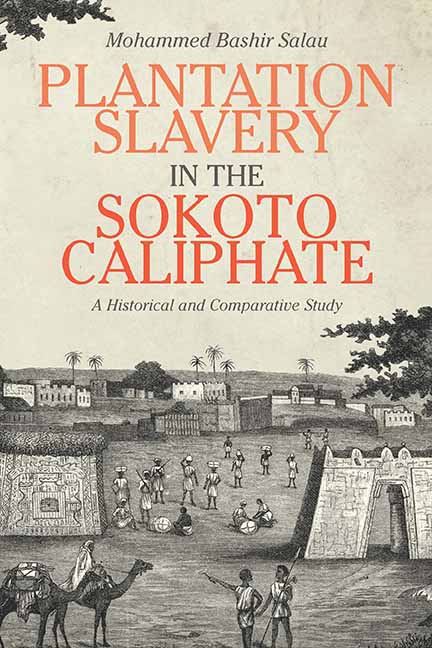Book contents
- Frontmatter
- Contents
- List of Illustrations
- Acknowledgments
- Introduction
- 1 Race and Slavery in the Sokoto Caliphate
- 2 The Roots of Sokoto Caliphate Plantations
- 3 The Course of Plantation Development
- 4 The Types, Structures, and Characteristics of Plantations
- 5 Observations on Slave Origins, Slave Resistance, and Labor Control
- 6 The Significance of Plantations
- 7 Plantations in the New World and in Coastal East Africa Compared
- Conclusion
- Notes
- Bibliography
- Index
5 - Observations on Slave Origins, Slave Resistance, and Labor Control
Published online by Cambridge University Press: 23 July 2019
- Frontmatter
- Contents
- List of Illustrations
- Acknowledgments
- Introduction
- 1 Race and Slavery in the Sokoto Caliphate
- 2 The Roots of Sokoto Caliphate Plantations
- 3 The Course of Plantation Development
- 4 The Types, Structures, and Characteristics of Plantations
- 5 Observations on Slave Origins, Slave Resistance, and Labor Control
- 6 The Significance of Plantations
- 7 Plantations in the New World and in Coastal East Africa Compared
- Conclusion
- Notes
- Bibliography
- Index
Summary
In the scholarly argument over whether slavery was primarily a social, economic, or political phenomenon, Mier and Kopytoff take a benign view. They argue that slavery mainly served to assimilate slaves into the slave masters’ households as kinsmen. Hopkins disagrees. Building on Nieboer and Domar, he points to the use of coercion, and stresses that in the context of land abundance, labor scarcity, and simple agricultural technology, “the costs of acquiring and maintaining slaves were less than the costs of hiring labour.” Hopkins's approach is therefore centered on economic choice, and it assumes that slavery was primarily an economic institution: that the essence of the slave's role mainly resided in his labor, and that slaves were chattel. Meillassoux's contribution to the debate over the nature of slavery in Africa recognizes that slavery could be, but was not always necessarily, primarily a political institution, and that the basis of slavery was violence. It also stresses confl icts between masters and slaves, as well as an emphasis on the organization of production. For Klein and other scholars, both Hopkins's and Meillassoux's approaches are most appropriate for high-density slave systems such as the Sokoto caliphate. The evidence confirms that Klein and others are right. In particular, it shows that most slaves were enslaved by violence, that they were considered property, that they were not always treated mildly, and that they often resisted against their subordination. It also reveals the economic dimensions of slavery, by stressing that slaves were used for agricultural production and other economic tasks, that they were viewed as property, and that slaves who worked on their own account typically paid their masters significant amounts, which contributed to their inability to purchase their own freedom.
Although Hopkins's and Meillassoux's arguments can be extended to the Sokoto caliphate, one question remains unanswered or has not been adequately addressed by scholars: why in the Sokoto caliphate and other such high-density slave systems, unlike in many other parts of Africa, we do not find the assimilation of most plantation slaves into the masters’ households as kinsmen, or (in other words) how was the development of serfdom prevented?
- Type
- Chapter
- Information
- Plantation Slavery in the Sokoto CaliphateA Historical and Comparative Study, pp. 90 - 114Publisher: Boydell & BrewerPrint publication year: 2018



